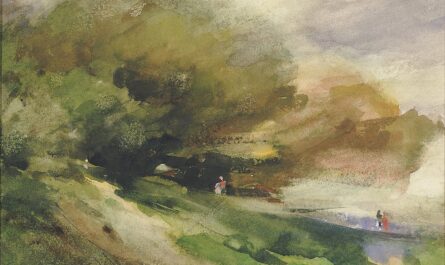John McPhee started his career with Time magazine and has been a staff writer at The New Yorker since 1965. He has written over twenty-five books in his career, and began teaching nonfiction writing at Princeton University in 1974. His students have gone on to write for the Washington Post, New York Times, The Atlantic, and other world-class publications. His book, Draft No. 4, is a collection of eight essays on the writing process which first appeared in The New Yorker. I recently recommended it as the single best book on writing I’ve read, and will today summarize my takeaways from each chapter.
Before reading this book, I had very little knowledge of the sheer amount of work McPhee has created over the decades. Draft was recommended by another writer, so I picked it up. I had read Stephen King’s On Writing, which was great at addressing the mindset of the writer. It focused on the importance of taking writing seriously as a professional and making time for it, sitting down daily, and doing the work. I wanted to specifically learn more about essays and structure and how to approach telling the story, which is the heart of McPhee’s book, and why I’ve found it incredibly helpful.
Progression
The opening chapter discusses finding ideas and continuing to find inspiration over the course of decades. You should take chances on topics which interest you – if you find it interesting, others will, too. This essay uses McPhee’s collection of three different profiles titled, Encounters with the Archdruid, as a backdrop to illustrate two concepts; first, ideas are always abundant, you merely need to grab the ones which interest you; and second, start with the interesting idea, gather material, then create a structure from there.
Quote:
“Ideas are where you find them…”
Structure
The chronological story is the oldest and most common structure, however, sometimes thematic structures make more sense. The structure of a piece is like the bones of an animal. You should not notice them on the final product; the piece should live, move, and breathe without calling attention to how it’s held up. Structure should rise from the material of the story, not be imposed upon the story. A title should tell the reader where the road is going, setting expectations and living up to them.
Quotes:
“As a nonfiction writer, you could not change the facts of the chronology, but with verb tenses and other forms of clear guidance to the reader you were free to do a flashback if you thought one made sense in presenting the story.”
“The lead—like the title—should be a flashlight that shines down into the story. A lead is a promise. It promises that the piece of writing is going to be like this.”
“There’s no throat clearing.”
Editors and Publisher
Writers should experiment with writing in all genres, even the ones you think you’ve no interest in. Because every writer expresses their ideas in a different way, there is no competition among writers. Be better than your previous self. Over your career, you will face opposition to word or phrasing choices, and you’ll have to choose which battles you want to fight.
Quotes:
“The title is an integral part of a piece of writing, and one of the most important parts, and ought not to be written by anyone but the writer of what follows the title.”
“It takes as long as it takes.”
Elicitation
In interviews, your job is to allow the person to tell their story, drawing out as much detail and perspective as possible. Sometimes feigning confusion helps with this. Quotations allow the reader to form their own opinion independent of the writer’s framing. Quotations can be tricky, though; a responsible writer cleans up the speech, but leaves the truth.
Quotes:
“Writing is selection. When you are making notes you are forever selecting.”
“I have no technique for asking questions. I just stay there and fade away as I watch people do what they do.”
Frame of Reference
Frame of reference is the ideas, works, or people you choose to allude to in a piece in order to advance its comprehensibility. “Common knowledge” changes from place to place and age to age. Beware of borrowed vividness – if you describe something with an obscure reference, you’ve lost the reader and haven’t effectively written your description.
Quote:
“If you look for allusions and images that have some durability, your choices will stabilize your piece of writing. Don’t assume that everyone on earth has seen every movie you have seen.”
Checkpoints
Writing non-fiction requires meticulous fact-checking of names, directions, anecdotes, etc. A good practice is triangulating facts; if three sources confirm a quote or other assertion, it’s probably accurate. Often fact-checking is an exercise in discovering who would know the answer to the fact in question.
Quote:
“In the making of a long piece of factual writing, errors will occur, and in ways invisible to the writer.”
Draft No. 4
Writing is re-writing. It begins with an initial draft in which you simply get from beginning to end. Then you improve it again and again. The writer must not fear the blank page or the initial draft. The final draft will be far and away better than the first, but you can’t get to the final draft without a first draft. You cannot improve what doesn’t exist. Find the word which means exactly what you have in mind; this means looking in a dictionary, not a thesaurus for the exact definition you want.
Quotes:
“How could anyone ever know that something is good before it exists? And unless you can identify what is not succeeding—unless you can see those dark clunky spots that are giving you such a low opinion of your prose as it develops—how are you going to be able to tone it up and make it work?”
“Blurt out, heave out, babble out something—anything—as a first draft. With that, you have achieved a sort of nucleus. Then, as you work it over and alter it, you begin to shape sentences that score higher with the ear and eye. Edit it again—top to bottom. The chances are that about now you’ll be seeing something that you are sort of eager for others to see. And all that takes time.”
“The way to do a piece of writing is three or four times over, never once.”
Omission
On every level, writing is selection; the writer chooses words, details, quotes, references, insights from other pieces, etc., to include. The best (and only) formula we have is to include those things which you find interesting to write about, and leave out those which don’t interest you. Every piece can be pruned down to a more concise, potent length.
Quotes:
“What is creative about nonfiction? It takes a whole semester to try to answer that, but here are a few points: The creativity lies in what you choose to write about, how you go about doing it, the arrangement through which you present things, the skill and the touch with which you describe people and succeed in developing them as characters, the rhythms of your prose, the integrity of the composition, the anatomy of the piece (does it get up and walk around on its own?), the extent to which you see and tell the story that exists in your material, and so forth. Creative nonfiction is not making something up but making the most of what you have.”
“Ideally, a piece of writing should grow to whatever length is sustained by its selected material—that much and no more.”
My Takeaways
“Writing is selection.” If there is one lesson to take from this book, this is it. The sentence is repeated in each essay, underscoring the decisions to be made with each line of every piece. Writing is a thousand decisions about what to remove, how to state the truth more clearly, how to get the reader from point A to point C, which details help flesh out an understanding and which are superfluous. Every aspect of writing is a choice to include or exclude something, and each decision will impact how easily understood or exciting your finished piece is.
“All the detailed preparations resulted not in a mass of confusing statistics and plans, but in the opposite, paring away the extraneous, reducing and refining until all that was left was what was needed for that game against that team.”
How long should a piece be? As long as it takes. This seems like flippant advice, but it isn’t. The piece should be as long as it takes for you to tell the story in a clear and compelling way. Cut away anything which doesn’t serve that purpose. It’s like taking a lump of clay, as Michaelangelo described, and cutting away everything that is not the sculpture. Most writers, especially early on, try to improve their writing by adding more to it. The seasoned writer understands that removing the fluff improves writing. Writing is about making your story clear – crystal clear – so the reader knows exactly what you are saying and why.
My biggest takeaway from McPhee’s Draft No. 4 was that writing is time-consuming work. We all know that to some extent, but this book showed how much engineering and consideration goes into every sentence of great writing. Good writing takes time because you have dozens of decisions to make, and that is okay. Writing is a skill to develop, and a craft you can improve over time. It doesn’t come down to simply being gifted or not. You can write great work if you’re willing to challenge yourself and select ruthlessly in the interest of helping your reader follow the story.




